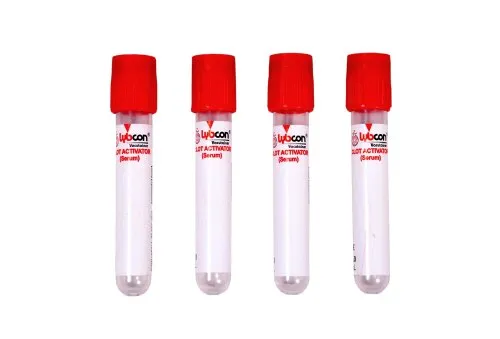 Have you ever wondered why healthcare professionals take blood samples in a specific order? This seemingly routine procedure, known as the “Order of Draw,” is a critical aspect of ensuring accurate and reliable laboratory test results. In this comprehensive guide, we will delve into the depths of the Order of Draw, unraveling its significance and providing step-by-step insights for healthcare professionals. Whether you’re a seasoned medical practitioner or a curious mind, let’s embark on a journey to understand the intricacies behind this crucial procedure.
Have you ever wondered why healthcare professionals take blood samples in a specific order? This seemingly routine procedure, known as the “Order of Draw,” is a critical aspect of ensuring accurate and reliable laboratory test results. In this comprehensive guide, we will delve into the depths of the Order of Draw, unraveling its significance and providing step-by-step insights for healthcare professionals. Whether you’re a seasoned medical practitioner or a curious mind, let’s embark on a journey to understand the intricacies behind this crucial procedure.
Understanding Order of Draw
The Order of Draw is a fundamental protocol followed by healthcare professionals during venipuncture, ensuring the reliability of diagnostic test results. By drawing blood in a specific sequence, the potential for cross-contamination and inaccurate results is minimized.
What is Order of Draw?
The order of draw is a critical process in blood collection that ensures the accuracy of test results. It refers to the sequence in which different types of blood collection tubes are used during venipuncture. Following the correct order prevents cross-contamination between additives in the tubes, which could lead to erroneous test results. Adhering to the established order of draw guidelines is vital for maintaining patient safety and the integrity of laboratory analyses.
The Importance of Order of Draw
Drawing blood in the correct order is essential because different tubes contain various additives designed to prevent blood clotting or preserve certain components. Following the wrong order can lead to sample contamination, compromised results, and potentially incorrect medical decisions.
Say Goodbye To Waiting Rooms And Long Lines. Speedy Sticks offers at-home testing.
Understanding the Order of Draw Sequence
Order of Draw sequence include:
The First Draw: Blood Cultures
Starting with blood cultures helps prevent contamination of these samples, which are crucial for detecting bloodstream infections.
The Second Draw: Coagulation Tests
Coagulation tests require a specific amount of anticoagulant, and drawing these tubes early helps prevent any carryover effects from other additives.
The Third Draw: Serum Tubes
Serum tubes are used for chemistry tests, and drawing them third allows time for clot formation and proper separation of serum from blood cells.
The Fourth Draw: Heparin Tubes
Heparin tubes are used for plasma determinations. Drawing them fourth helps prevent heparin carryover, which can affect test results.
The Fifth Draw: EDTA Tubes
EDTA tubes are used for tests like complete blood counts (CBC). Drawing them fifth ensures accurate results by minimizing the influence of other additives.
The Sixth Draw: Oxalate/Potassium Tubes
These tubes are used for tests requiring plasma. Drawing them last prevents contamination from other additives, ensuring accurate test outcomes.
Where To Get Tested?
Say Goodbye To Waiting Rooms And Long Lines. Speedy Sticks offers at-home testing.
Factors Influencing the Order of Draw
The choice of anticoagulants, additives, and the order in which tubes are drawn significantly impacts the accuracy of test results. Different tubes are formulated to interact specifically with the blood components they need to preserve.
Step-by-Step Guide to Order of Draw
Gathering Necessary Equipment: Assemble all required tubes, needles, and supplies before starting the procedure.
Identifying the Patient: Confirm the patient’s identity using two unique identifiers to prevent errors.
Proper Patient Positioning: Ensure the patient is comfortable and positioned correctly for optimal vein access.
Vein Selection and Cleansing: Choose an appropriate vein and clean the site to prevent infection.
The Actual Blood Draw Process: Perform the venipuncture using a sterile technique, following best practices.
Labeling and Mixing Tubes: Label each tube correctly and mix them gently to prevent clot formation or sample degradation.
Ensuring Patient Comfort: Throughout the process, prioritize the patient’s comfort and communicate clearly.
Common Mistakes to Avoid
Tube Cross-Contamination: Failing to follow the proper order can lead to tube cross-contamination, affecting test results. Always adhere to the sequence to prevent this issue.
Inadequate Mixing of Additives: Proper mixing of additives is crucial to ensure accurate results. Inadequate mixing can lead to inaccurate readings.
Incorrect Order Leading to Test Inaccuracies: Drawing tubes in the wrong order can compromise the integrity of the sample and lead to incorrect test outcomes.
Importance of Patient Preparation
Fasting vs. Non-Fasting Draws: Some tests require fasting before the blood draw, while others do not. Understand the test requirements and communicate them to the patient.
Medication Influence on Test Results: Certain medications can affect test results. Ensure patients disclose their current medications to avoid inaccurate interpretations.
Order of Draw in Special Circumstances
Pediatric Patients: Drawing blood from children requires special care and techniques to minimize discomfort and ensure accurate results.
Geriatric Patients: Aging veins can pose challenges. Gentle techniques and proper positioning are essential.
Difficult Vein Access: In cases of difficult veins, experienced healthcare professionals may need to use alternative sites or methods.
Maintaining Compliance and Quality
Accreditation and Regulations: Healthcare facilities must adhere to accreditation standards and regulatory guidelines to ensure patient safety and accurate results.
Quality Control Measures: Regular quality checks and calibration of equipment are essential to maintain accurate testing procedures.
Conclusion
The Order of Draw is not just a routine; it’s a meticulous process that safeguards the accuracy of diagnostic tests. Following the proper sequence minimizes the potential for errors, ensuring that healthcare professionals can provide patients with the best possible care based on reliable results.
So, next time you see a healthcare professional drawing blood, remember the intricate dance they perform to ensure the validity of your test results.
Say Goodbye To Waiting Rooms And Long Lines. Speedy Sticks offers at-home testing.







